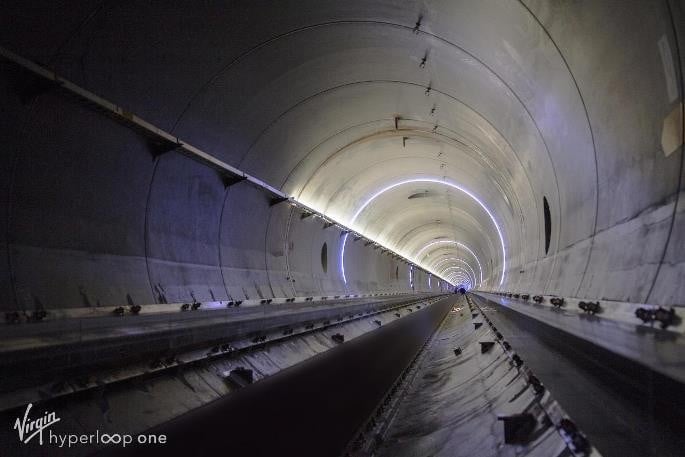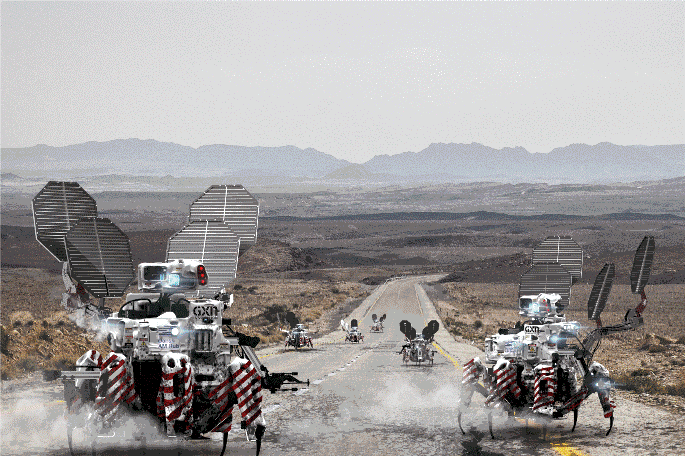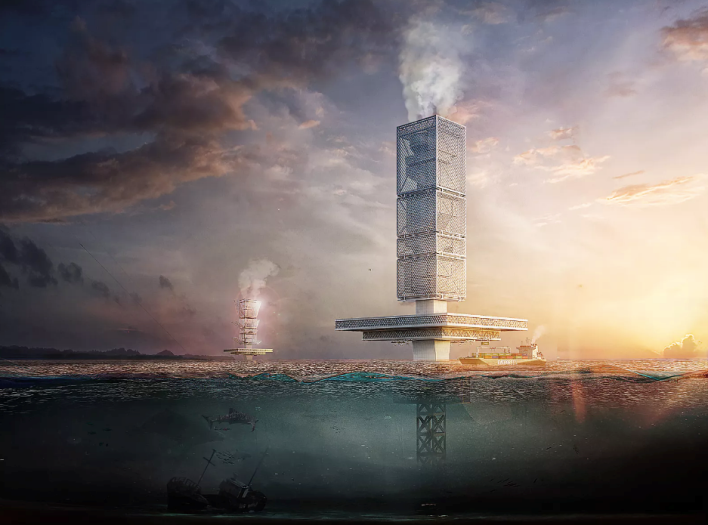The asteroid gold rush
Asteroid mining could become big business. NASA estimates the total value of precious metals and minerals contained in all known asteroids in the Solar System to be US$700 quintillion.
American mining company Planetary Resources hopes to use robotic vehicles to extract gold and platinum from asteroids, while China is rumoured to be working on a scheme to capture an asteroid and steer it back to Earth.
Scientists at the University of Adelaide in Australia, however, have a simpler method, using separating solvents to extract metals and minerals in zero gravity. In May 2019 the team launched the first liquid separation laboratory into space, in the hopes of proving that their process is faster and more selective than other methods.

Above: The double asteroid Antiope
All aboard the 600mph train

Above: The Sir Richard Branson-backed Virgin Hyperloop One has unveiled a plan to build an ultra-fast underground train link between Mumbai and Pune.
One of India’s busiest transit routes is set for a serious upgrade. The Sir Richard Branson-backed Virgin Hyperloop One has unveiled a plan to build an ultra-fast underground train link between Mumbai and Pune. By 2030, pod-like capsules levitating inside a steel tube will accelerate to speeds of 600mph, covering the 100-mile distance in just 35 minutes.
Does this sound familiar? Tesla founder Elon Musk floated the idea of the Hyperloop back in 2013, and numerous firms are now vying to make the technology a real-life mode of transport. Virgin is planning a second Hyperloop between Abu Dhabi and Dubai, while Musk already has permission to dig a tunnel between New York and Washington DC.
Aside from pure speed, supporters claim the technology will be safer, kinder to the environment and resistant to earthquakes.
Carbon-free cruising
Keen to cut down their carbon footprint, forward-thinking maritime operators are ditching diesel engines for hydrogen fuel cells. They might be expensive but they’re far more efficient and produce no by-products other than water and heat.
Later this year, the world’s first commercial hydrogen fuel cell-powered ferry will make its debut. The 84-passenger Water-Go-Round will begin a three-month trial before entering service in San Francisco Bay.
Critics point out that the hydrogen fuel will still have to be delivered to the dock by diesel truck, but Water-Go-Round’s operator says it has plans to build its own hydrogen refuelling station.
Flying 3D printers
Is it a bird? Is it a plane? No, it’s actually a flying 3D printer. It sounds far-fetched but 3D printer drones could one day repair the planet’s deteriorating buildings and crumbling coastlines.
Fed with concrete, plastic or high-performance polymers, flying 3D printers would fill tiny fissures and even treat older structures with thermally efficient coatings. GXN Innovation, the company behind the concept, even imagines underwater 3D printers that could carry oyster-based biological glue to repair coral reefs.
“By enabling 3D-printing robots to crawl, swim, and fly, we can address pressing environmental threats around the world at lower cost and with greater efficiency,” says Kasper Jensen, founder of GXN.

Above: Flying 3D printers
Robots replace roughnecks
Are we entering the era of the digital oilfield? Norwegian energy giant Equinor has deployed the world’s first fully automatic, remotely operated oil and gas platform. Called Oseberg H, it is entirely unmanned and has no living quarters – not even a toilet.
The pioneering structure, operated from a hub platform five miles (8kms) away, is made possible by a fleet of robotic technologies and Microsoft’s cloud computing software. The £606 million platform might lack home comforts but Equinor believes it is safer and more cost effective than the traditional sub-sea wells that are maintained by teams of human divers.
Flight club
Boeing already sells aeroplanes, rockets and satellites. Now the US aerospace giant wants to add flying cars to that list. It is offering a US$2million prize for the safest, quietest personal flying machine.
Next year, five brave finalists in the Boeing GoFly competition will see their prototype flying machines take to the skies and compete for a share of the Boeing’s investment cash. Each design must be capable of transporting a single person 20 miles (32kms) without refuelling or recharging – and have vertical take-off and landing capability. Designs range from the hovering Airboard 2.0 to the ERA Aviabike, a futuristic flying motorcycle.
Plastic fantastic

Above: The Filtration Skyscraper
Could floating skyscrapers that recycle garbage eventually solve the crisis of plastic waste in our oceans? Architectural designer Honglin Li thinks so. His waste-to-energy megastructure, dubbed the Filtration Skyscraper, would produce clean water and renewable fuel.
Unlike conventional recycling plants that rely on conveyor belts, Li’s idea is to pump the polluted water up to the top of the building and use gravity to filter out recyclable material as the water runs back down to sea level. Waste would be decomposed at temperatures between 400℃ and 650℃, producing hydrogen gas that would power the self-sustaining structure.
The buzz around drones
Courier company UPS wants drones to deliver more urgent packages. They already use autonomous HorseFly drones to deliver blood and medical samples to hospitals in North Carolina. Now they’re seeking permission to expand their UPS Flight Forward operation across the US.
Here’s how it works: a six-rotor electric drone launches itself from the roof of an electric delivery vehicle, drops off its cargo, and then reunites with the vehicle. UPS says drone use has cut transport time from 30 minutes to just over three minutes.
Does this mean drones could soon be delivering pizza? Not quite yet: “Our focus is on healthcare, just-in-time, real urgent movements, life-changing events in hard-to-reach locations,” says Bala Ganesh, at UPS’s Advanced Technology Group.
